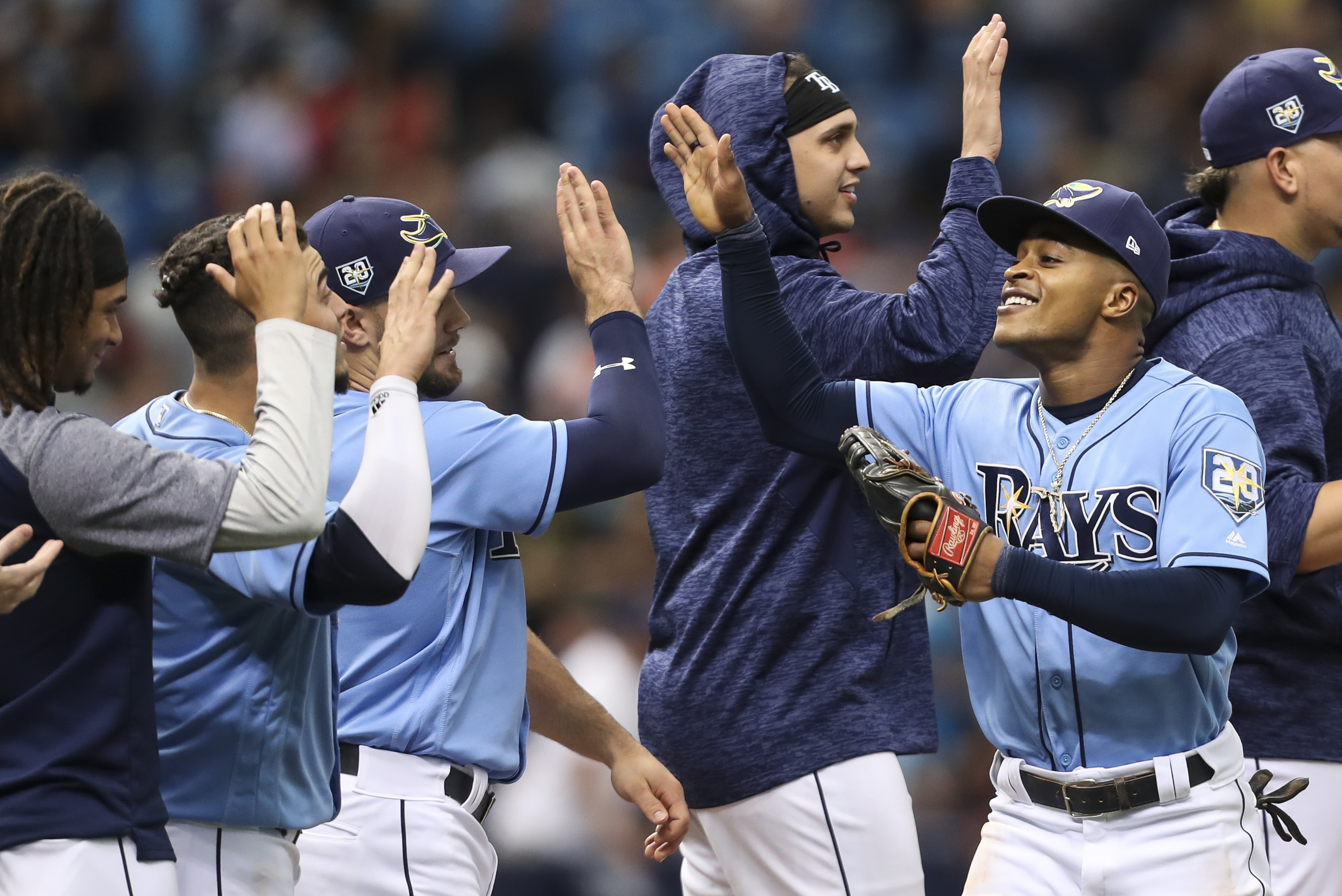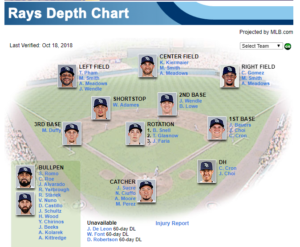The Unpredictable 2018 Rays and Why They are Poised for Future Success

When the Tampa Bay Rays began the season, almost everyone had pegged them as one of the worst teams in baseball, and certainly in the American League East, a division they share with the Yankees and Red Sox. The team’s offseason overhaul mixed with their share of early injuries only put them in a deeper hole. Consider that they started off extremely slow, with a 4-13 record halfway through April, and you wouldn’t think twice if I told you that this team was another low-caliber offense going nowhere.
However, the Rays slowly crept back up and continued to play .500 baseball all the way up until the All-Star break where they finished 49-47. At this point, there is still nothing to get excited about. It is more of a pat on the back for a team with low expectations. But fast forward three months later to September 30th. The Rays finish the season with a 90-72 record, good for the sixth most wins in their League. How did the Rays quietly become one of the best teams in the American League? We’ll look at how a team that got no respect early on produced the ultimate turn-around and why their outlook beyond this season is extremely bright.
The Rays were a busy bunch this offseason, to say the least. For starters, they wound up designating Corey Dickerson for assignment. A perplexing move to most, including former Ray Evan Longoria, who was traded to the Giants earlier in the offseason. In return for Longo, the Rays received Minor League infielder Tristan Gray, cash considerations, and the two-time Tommy John recipient Daniel Hudson, who ultimately wound up getting released in late March. Moreover, they dealt a highly valued member of the team, Steven Souza Jr., to the Diamondbacks in a three-team trade that netted them prospects Anthony Banda and Nick Solak. Although the Dickerson move, along with trading Jake Odorizzi to the Twins, served more as a salary dump, GM Erik Neander described the move as “a pure baseball decision”, in which the Rays felt the return was too good to pass up on for the sake of their future.
However, the Rays, like most small market teams, operate on a razor’s edge, where small misfortunes can get greatly magnified. When the Rays lost Jose De Leon and Brent Honeywell to Tommy John surgery early in the 2018 season, they incurred a major blow to their pitching rotation. It’s certainly hard to replace your top overall prospect and another one of your top pitching prospects going into the season. But what if the Rays didn’t need to replace these guys…?
The Opener
Starting out your season with Chris Archer atop of your rotation is not a bad thing. But when he is quite literally the only pitcher you know you can expect good results from, you have to dig deep. Dig deep is exactly what the Rays did- deep into their bullpen. From mid-May on, the Rays employed an opening pitcher instead of a starting pitcher for a large portion of their season. The “opener” was a relief pitcher who started the game for an inning or two prior to their actual multi-inning pitching coming into the game.
This served a couple of purposes: a) this allowed the Rays to fill roles from within their organization without having to acquire someone else (remember, they are committed to their low payroll.) And b) statistics say that the opposing lineup garners the best average against a pitcher as they make their way three times through the order. Not only did the Rays have the ability to promote from within, but they would essentially allow their true starter to go deeper into games.
How did they fare with this tactic? In that May 19th game against the Angels, Sergio Romo opened the game and ultimately struck out Mike Trout, Zack Cozart, and Justin Upton in the first. Ryan Yarbrough then came in to throw 6 1/3 innings in an eventual 5-3 Rays win.
The Rays would continue to employ an opener as they, at one point in the season, only had two true starters listed on their depth chart on mlb.com. In fact, since they acquired Tyler Glasnow, a top pitching prospect from the Pirates organization, they still only have three “starters” in their rotation:
It will be interesting to see what the Rays decide to do with De Leone and Honeywell coming back next season. Of course, it would be nice see them bloom into the type of pitcher that Blake Snell did this year. If that’s the case, it seems likely that the Rays will employ a somewhat normal rotation at that point. However, I would not be surprised to see the opener be a staple in their 2019 strategy in helping the two pitchers ease into a role.
We shouldn’t gloss over what Blake Snell did this year. Snell became one of the best pitchers in baseball this season, pitching to the tune of a 1.89 ERA with a 21-5 record, and he wasn’t the only bright star on this roster. Mallex Smith and Joey Wendle also had seasons to remember. Smith recorded a .367 OBP and 115 OPS+ to go along with 40 stolen bases while Wendle quietly took the league by storm his rookie year, hitting .300 with an OBP of 354 and 118 OPS+. Wendle was so impressive this year among rookies, we even highlighted his season in a recent OTB post.
Two Steps Ahead
Besides the production and creative strategies to mix up pitching matchups, perhaps the biggest headline surrounding the Rays after this season is their future. According to spotrac.com, the Rays only have Kevin Kiermaier’s $8,166,666.00 allocated for their 2019 season. The rest of their roster payroll is to be determined from free agent signings and arbitration eligible players. In addition, they have 21 players under team control affordably for the 2019 season.
We know teams have to be diligent with spending in small markets, but the way the Rays have formed their team with the amount of talent blooming is borderline genius. Fans and industry goers alike questioned the Ray’s motives throughout the year when they traded team favorites like Souza Jr., Longoria, and Archer. However, the current farm system is a testament to the Rays organization and front office.
We saw Theo Epstein rebuild the Cubs with key players in successive drafts and acquisitions for minor league talent only to build the first World Series-caliber team since 1908. The Astros have done the same thing; acquiring and developing young talent the past few years only to see their first World Series championship in franchise history in 2017.
Are the Rays the next franchise to turn their fortunes around? They’ve certainly proved that just because your market is smaller, does not mean you don’t have the ability to field a competitive team. In addition to their talent already on the field, they boast the fifth ranked farm system in all of baseball, according to Bleacher Report, with more Major League impact talent soon on the way, giving them even more roster flexibility down the road.
While all of Major League Baseball had their eyes on the Yankees and Red Sox in the A.L. East, the Rays certainly surged ahead of the pack in terms of headlines toward the end of the season. If the Cubs and Astros are any indication that the start of a winning team begins with young, controllable talent, the Rays are next in line. In fact, they may have even done it better.
– Mike Lambiaso

















